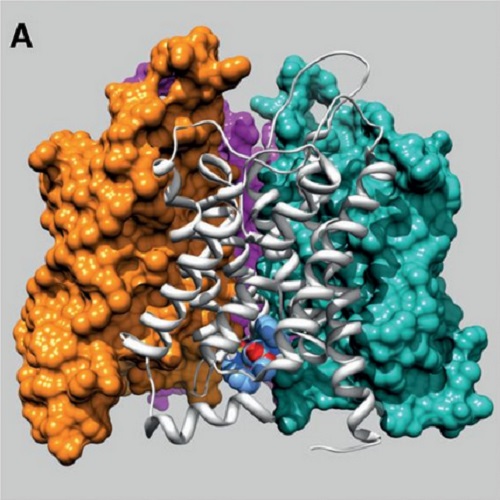AqF026 is a pharmacologic agonist of the water channel aquaporin-1.
Aquaporin-1 (AQP1) facilitates the osmotic transport of water across the capillary endothelium, among other cell types, and thereby has a substantial role in ultrafiltration during peritoneal dialysis. At present, pharmacologic agents that enhance AQP1-mediated water transport, which would be expected to increase the efficiency of peritoneal dialysis, are not available. Here, we describe AqF026, an aquaporin agonist that is a chemical derivative of the arylsulfonamide compound furosemide. In the Xenopus laevis oocyte system, extracellular AqF026 potentiated the channel activity of human AQP1 by >20% but had no effect on channel activity of AQP4. We found that the intracellular binding site for AQP1 involves loop D, a region associated with channel gating. In a mouse model of peritoneal dialysis, AqF026 enhanced the osmotic transport of water across the peritoneal membrane but did not affect the osmotic gradient, the transport of small solutes, or the localization and expression of AQP1 on the plasma membrane. Furthermore, AqF026 did not potentiate water transport in Aqp1-null mice, suggesting that indirect mechanisms involving other channels or transporters were unlikely. Last, in a mouse gastric antrum preparation, AqF026 did not affect the Na-K-Cl cotransporter NKCC1. In summary, AqF026 directly and specifically potentiates AQP1-mediated water transport, suggesting that it deserves additional investigation for applications such as peritoneal dialysis or clinical situations associated with defective water handling.

- J. Am. Soc. Nephrol. 2013 Jun 06;24(7):1045-52
- 2013
- Cell Biology
- 23744886
- PubMed
Enabled by:
